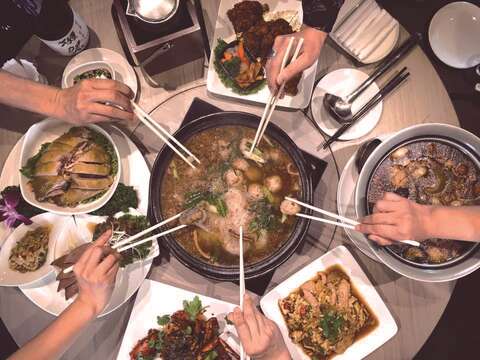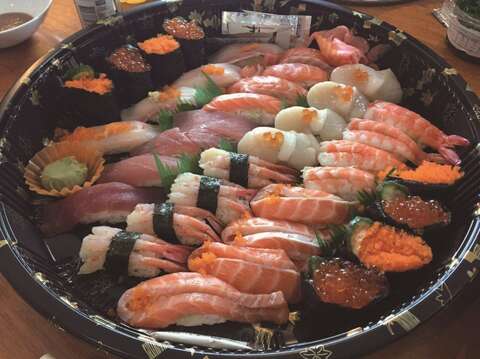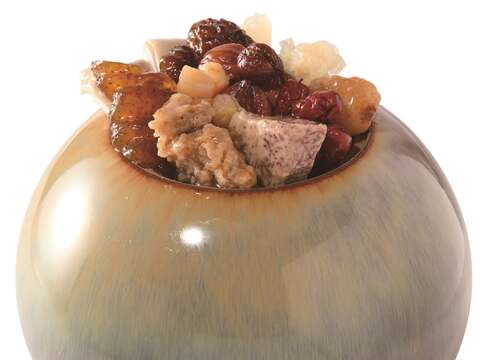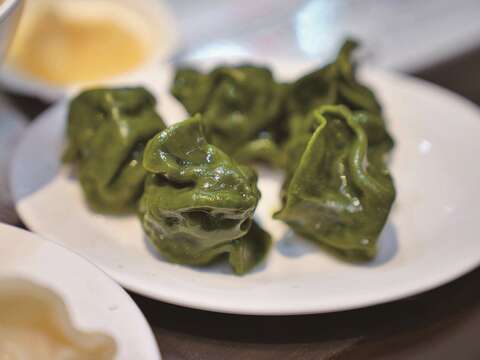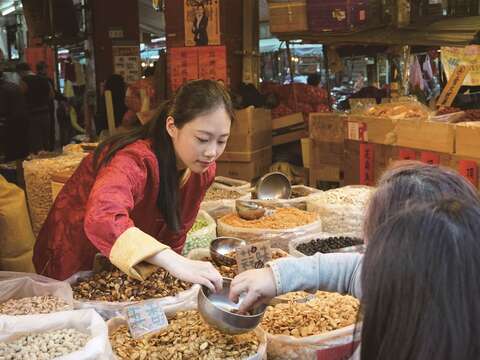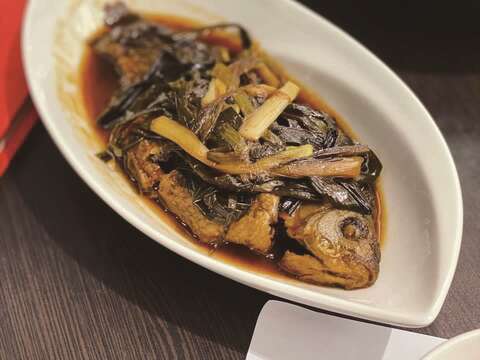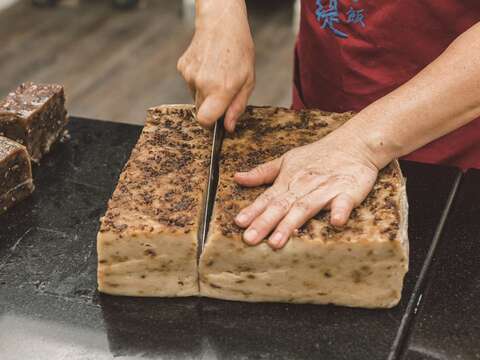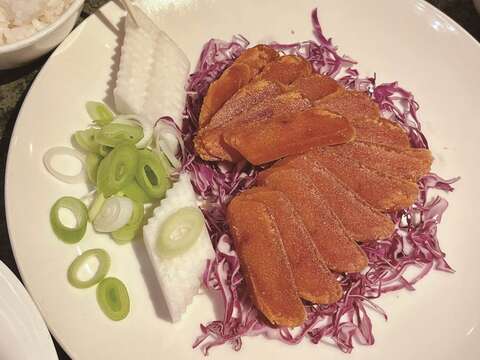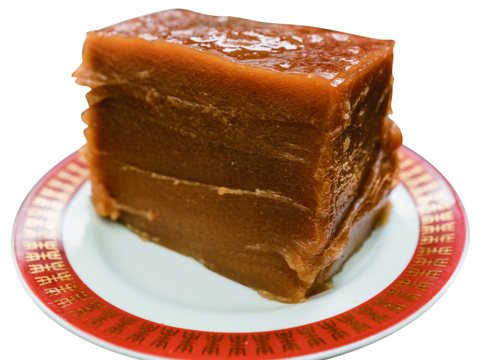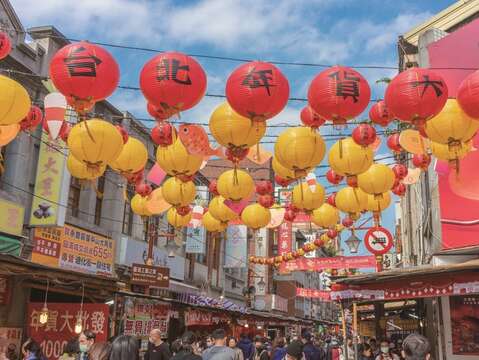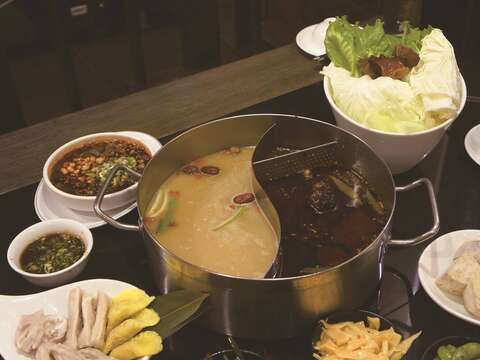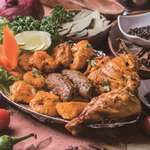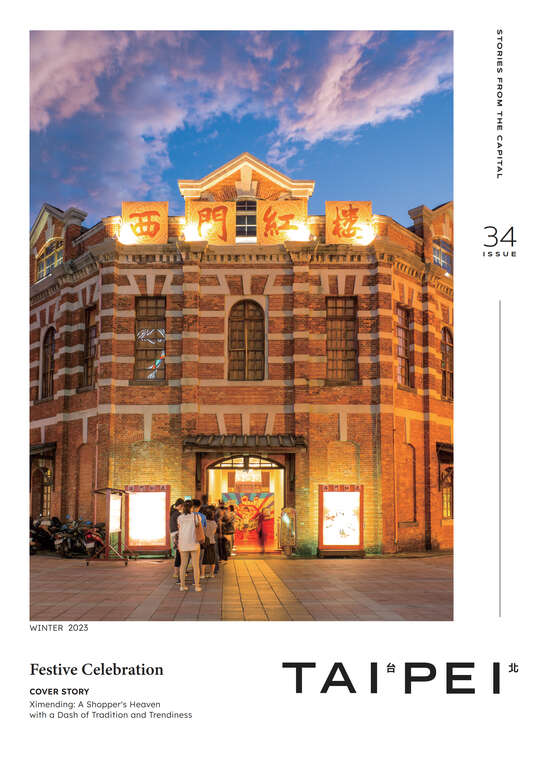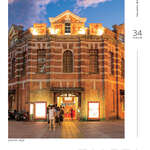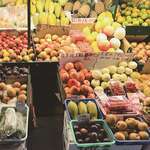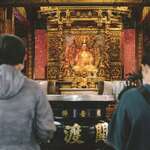Post date:2023-12-11
658
TAIPEI #34 (2023 Winter)
Lunar New Year's Eve Taiwanese Style: A Table of Lucky Dishes
Author Yi Tseng
Photographer Golden Formosa, Know-Sticky Oil Rice, Iris Huang, Stanley Wang, April Chen, Kerstin Hsu, Michael Kuo, Crystal, Department of Information and Tourism, Taipei City Government
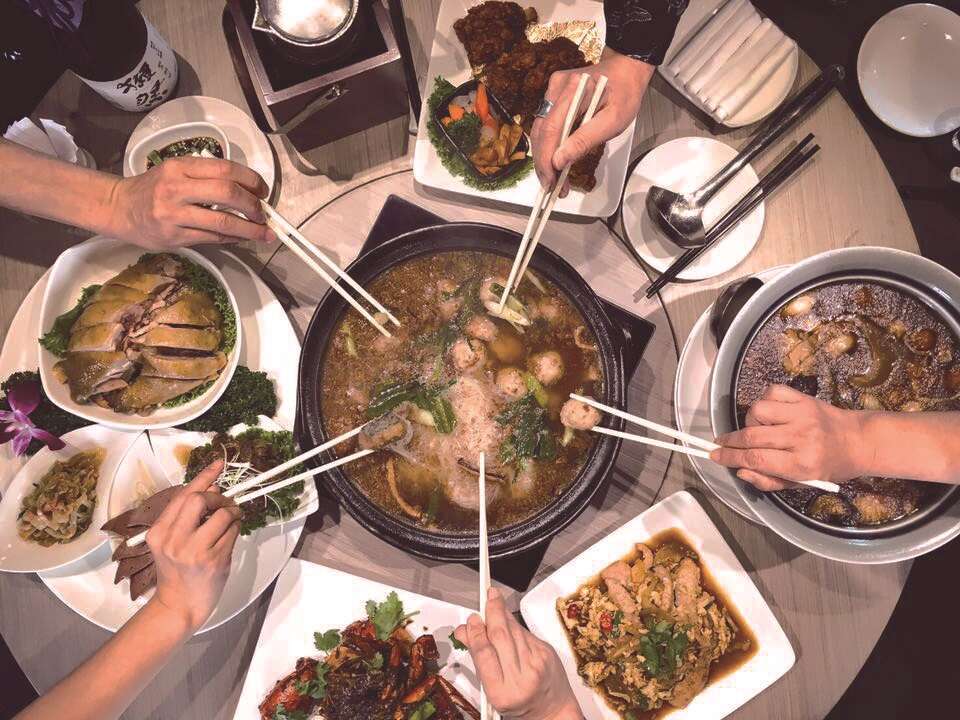 ▲On Lunar New Year's Eve, the whole family gathers together to have a reunion dinner, often with a hot pot sitting in the center of a round table. (Photo・Golden Formosa)
▲On Lunar New Year's Eve, the whole family gathers together to have a reunion dinner, often with a hot pot sitting in the center of a round table. (Photo・Golden Formosa)
The essence of Taiwanese cuisine lies in its cross-regional and diverse influences. Early migrations of Min and Yue people, cultural impacts from the Japanese era during the first half of the 20th century, and the arrival of millions of refugees after the Chinese Civil War have all contributed to a rich tapestry.
Despite their diverse cultural backgrounds and languages, these disparate communities share the use of the traditional Chinese lunar calendar. As a result, on the night of Lunar New Year's Eve, everyone returns home to prepare a sumptuous feast, following traditional customs of lucky homonyms, such as having fish for "surplus every year (年年有餘)," sycee-shaped dumplings for "welcoming wealth and treasures (招財進寶)", rice cakes for "rising fortunes year by year (年年高升)," and sitting around the hot pot to form the "roundness" symbol for "family reunion (團圓)."
The varied preparations of these common ingredients showcase the cultural context of each family. Let's unveil the secrets of a Taiwanese Lunar New Year's Eve dinner, often considered the most important meal of the year.
Fish Dishes: Surplus Every Year
Taiwanese people express their humble hopes for the new year with the wish for "harvest with surplus." As the Chinese pronunciation of fish sounds like surplus (餘), fish dishes symbolizing good luck are indispensable. Moreover, for the New Year's Eve dinner, fish dishes should not be completely consumed, to practice the true meaning of "surplus."
Rong Rong Yuan (榮榮園) is highly recommended by food critics and Bib Gourmand. Its horsehead tilefish with stuffed tofu (馬頭魚燒豆腐) captures the rich flavors of Jiangsu and Zhejiang cuisine. For a more affordable option, deep-fried carp simmered with scallions (蔥㸆鯽魚) at the long-established Yi-Chang Yufang (億長御坊) is both slightly sweet and sour, appealing to adults and children alike.
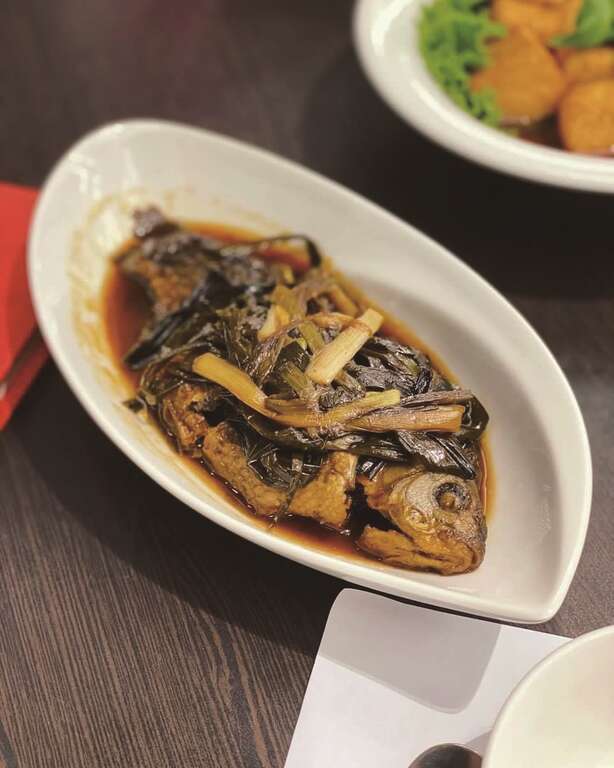 ▲▼Fish dishes symbolizing "harvest with surplus" are indispensable. Modern families may opt for sashimi for a contrast of flavors. (Above・Michael Kuo;Below・Stanley Wang)
▲▼Fish dishes symbolizing "harvest with surplus" are indispensable. Modern families may opt for sashimi for a contrast of flavors. (Above・Michael Kuo;Below・Stanley Wang)
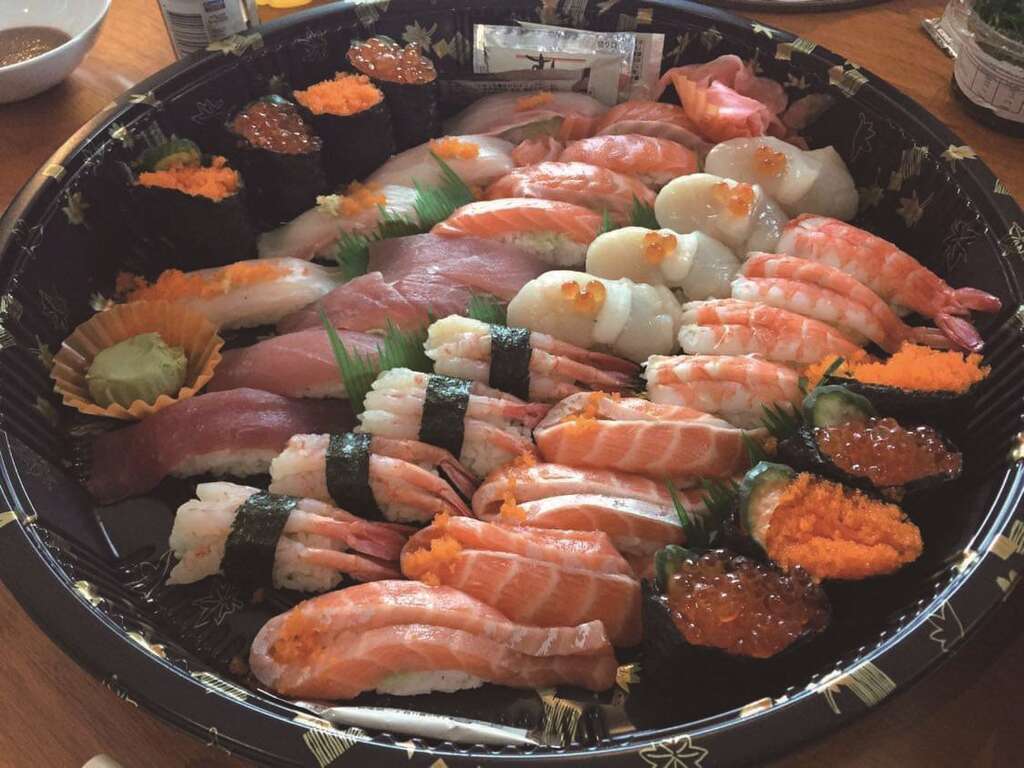
For those seeking a taste of high-end fish dishes, the steamed grouper or marble goby at well-regarded Shin Tung Nan Seafood (新東南海鮮餐廳) enjoys a stellar reputation. Young families with an open-minded approach to tradition may opt for fresh sashimi from the Addiction Aquatic Development (上引水產), adding a refreshing and stylish touch to the dining table.
Dumplings: Welcoming Wealth and Treasures
The shape of dumplings resembles ancient Chinese currency known as "yuanbao (元寶)," i.e., sycee, a fairly popular symbol of prosperity during the Lunar New Year. The tradition of eating dumplings on New Year's Eve signifies ushering in wealth and becoming rich in the coming year. Hence, famous dumpling shops in Taiwan often see long lines in the days leading up to the Lunar New Year.
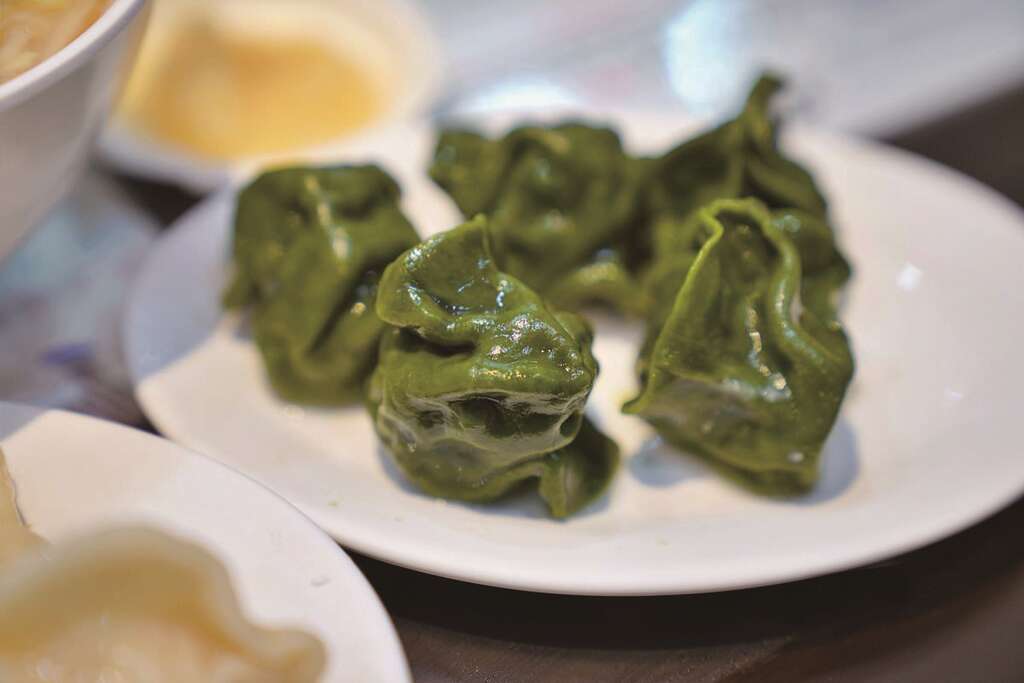 ▲Eating dumplings on Lunar New Year's Eve means ushering in wealth and becoming rich in the coming year, as the shape of dumplings is similar to that of ancient Chinese currency, "yuanbao." (Photo・Crystal)
▲Eating dumplings on Lunar New Year's Eve means ushering in wealth and becoming rich in the coming year, as the shape of dumplings is similar to that of ancient Chinese currency, "yuanbao." (Photo・Crystal)
Notable examples include scallop dumplings from Takumi Dumplings (巧之味), said to be President Tsai Ing-wen's favorite, or the frozen dumplings of myriad fillings and seasonings in each Taipei resident's freezer, such as those from A-Yu Dumplings (阿玉水餃). If you can't reunite with family for the Lunar New Year, these easy-to-cook yet delicious dumplings can surely provide a welcome sense of ritual.
Buddha Jumps Over the Wall: Happiness, Longevity and Well-being
The top dish of Taiwanese pot cuisine, Buddha Jumps Over the Wall (佛跳牆), uses a variety of delicacies including premium squid, scallops, winter bamboo shoots, chicken, and ham. It is so fragrant that it's said the vegetarian Buddha would climb over the wall for it after catching its irresistible aroma. Therefore, this dish is also known as Buddha's delicacy.
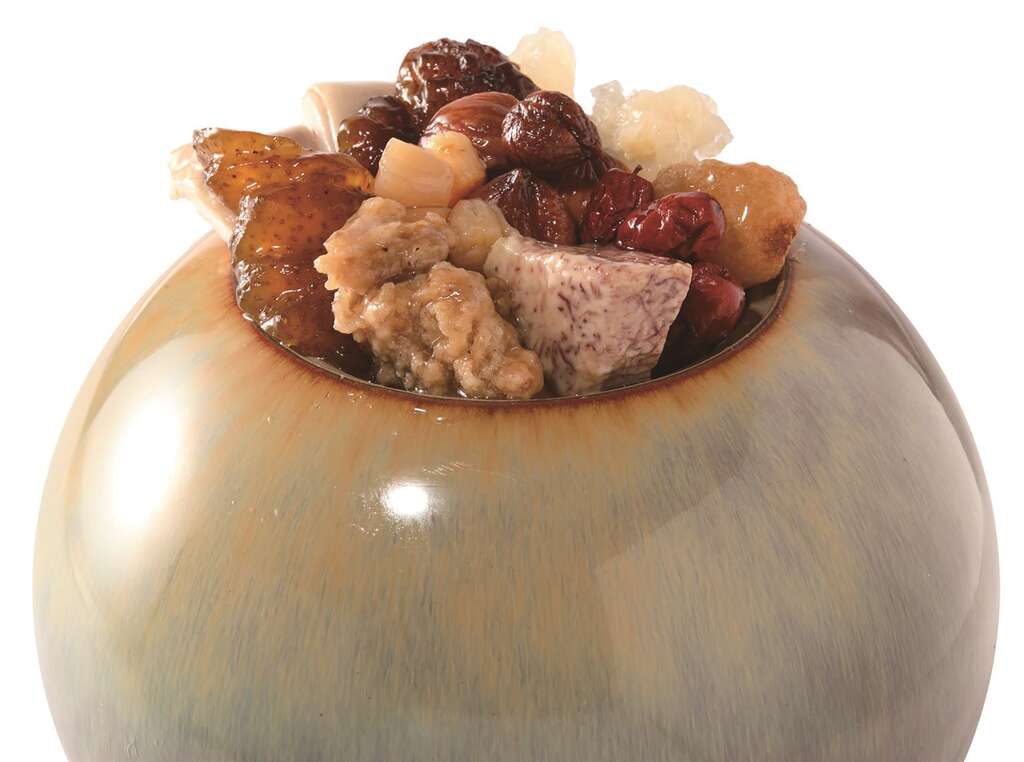 ▲The name of "Buddha Jumps Over the Wall" comes from the notion that even the vegetarian Buddha would climb over the wall to enjoy this dish, so irresistible is the alluring aroma. (Photo・Golden Formosa)
▲The name of "Buddha Jumps Over the Wall" comes from the notion that even the vegetarian Buddha would climb over the wall to enjoy this dish, so irresistible is the alluring aroma. (Photo・Golden Formosa)
Each ingredient needs to be processed separately and then cooked together. Due to the complicated process, modern families usually choose to order it from restaurants like Golden Formosa (金蓬萊遵古台菜). Their MICHELIN star shines so bright that reservations must be made at least two weeks in advance.
Rice Cakes: Rising Fortunes Year By Year
Every traditional market boasts several stalls selling rice cakes (年糕), turnip cakes (蘿蔔糕), and other traditional pastries that end with the sound "gao," which is a homophone for "rising." Each kitchen manager responsible for sourcing food has their preferred rice cakes vendor, and compromise is out of the question.
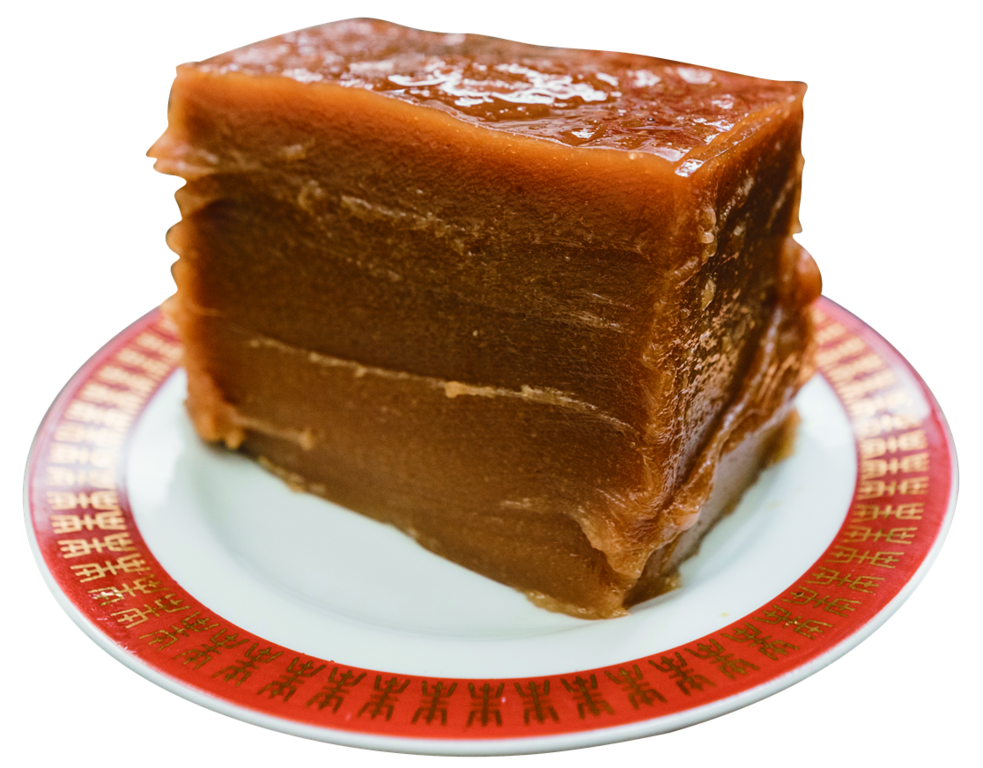 ▲▼People prepare traditional pastries that end with the sound "gao" to hope for rising fortunes. (Photo・Know-Sticky Oil Rice)
▲▼People prepare traditional pastries that end with the sound "gao" to hope for rising fortunes. (Photo・Know-Sticky Oil Rice)
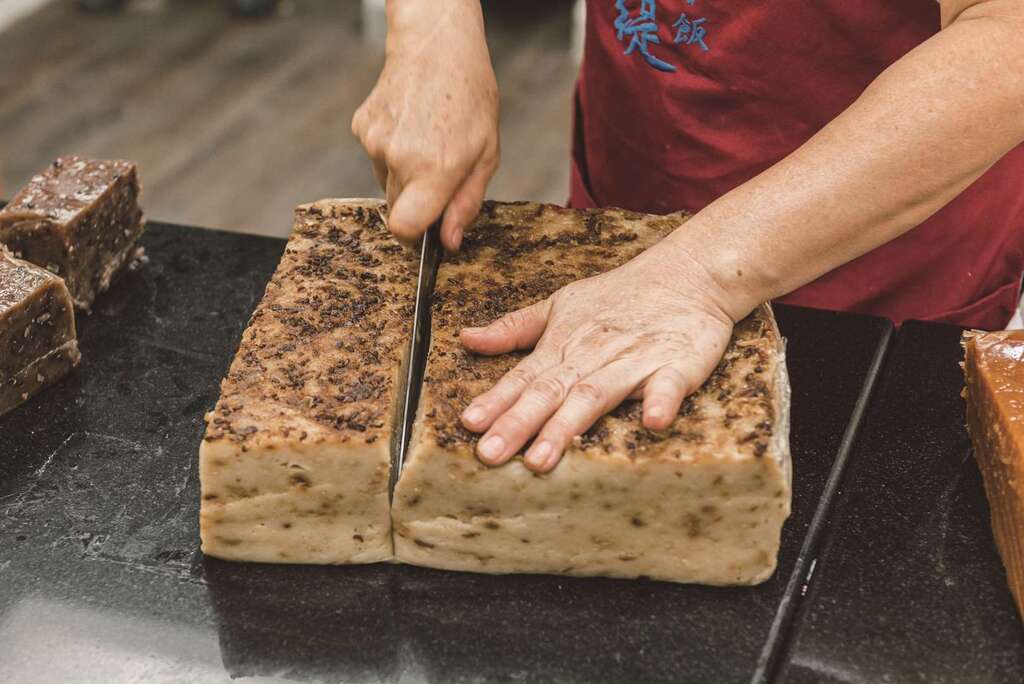
Turnip cakes from Xing Ji Food (興記) at Dongmen Market (東門市場), the various rice cakes from Red Turtle Uncle (紅龜伯) on Sanshui Street (三水街) in Wanhua (萬華) — each has its own loyal supporters. Of course, if there's a family member skilled in making traditional pastries, a homemade rice cake featured in your New Year's Eve table photo will undoubtedly win the most likes on social media, as rice cakes' auspicious meaning reflects Taiwanese people's strong desire for good things to happen in the new year.
Mullet Roe: Prospering Family with Many Offspring
During winter, mullet migrate to southern Taiwan to spawn. Their rich, roe-filled sacs are harvested, then dried in the sun for several weeks, turned regularly until fully dried. Thus, the mullet roe is rich in flavor and full of texture!
While farmed mullet roe is available in the market, the highest quality is still the wild-caught variety, as it's considered a rare and luxurious treat. It's not something that people get to eat every day. When celebrating the Lunar New Year, a platter of mullet roe is a must-have to make the occasion grand, and the abundant eggs are taken as a good omen of many offspring and a prosperous family.
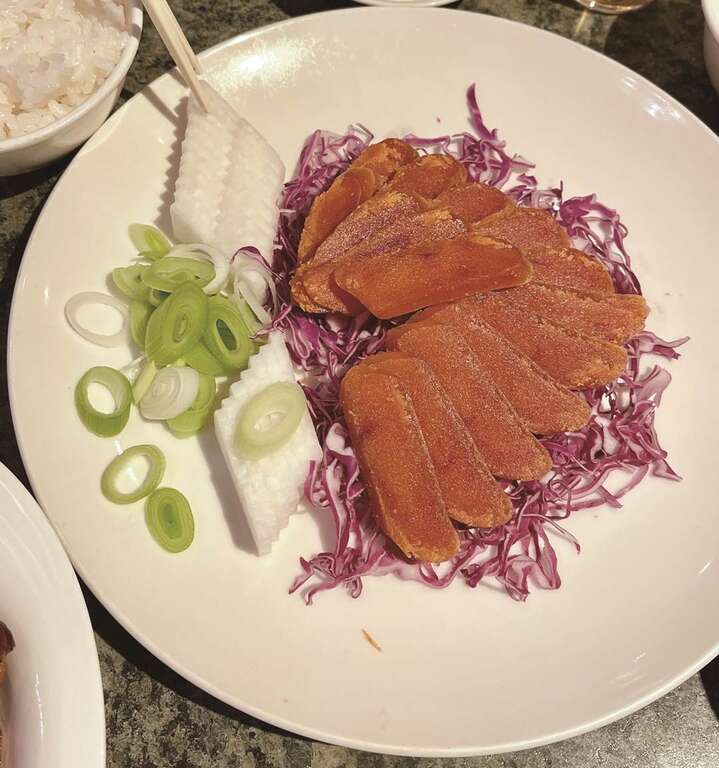 ▲A platter of mullet roe expresses the meaning of a prospering family with many offspring. (Photo・Kerstin Hsu)
▲A platter of mullet roe expresses the meaning of a prospering family with many offspring. (Photo・Kerstin Hsu)
The preparation is straightforward: slice the mullet roe and lightly grill it in an iron pan, or over an open fire. Remember to be careful to maintain its moist texture in the center. Serve with sliced daikon radish, garlic, or even apple for those who fancy a touch of sweetness. It creates a flavorful and sumptuous taste in the mouth.
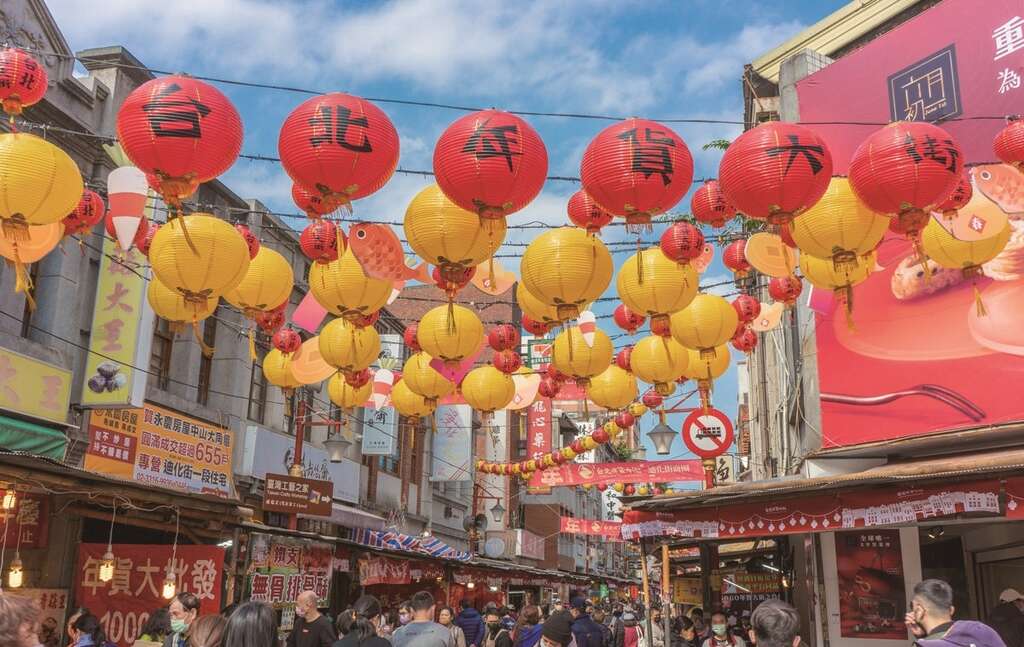 ▲▼Dihua Street in Dadaocheng hosts one of the most famous events in Taipei ― Taipei Lunar New Year Festival. Free samples are offered by stalls along the street, tempting visitors to give it a try. (Above・Iris Huang;Below・Department of Information and Tourism, Taipei City Government)
▲▼Dihua Street in Dadaocheng hosts one of the most famous events in Taipei ― Taipei Lunar New Year Festival. Free samples are offered by stalls along the street, tempting visitors to give it a try. (Above・Iris Huang;Below・Department of Information and Tourism, Taipei City Government)
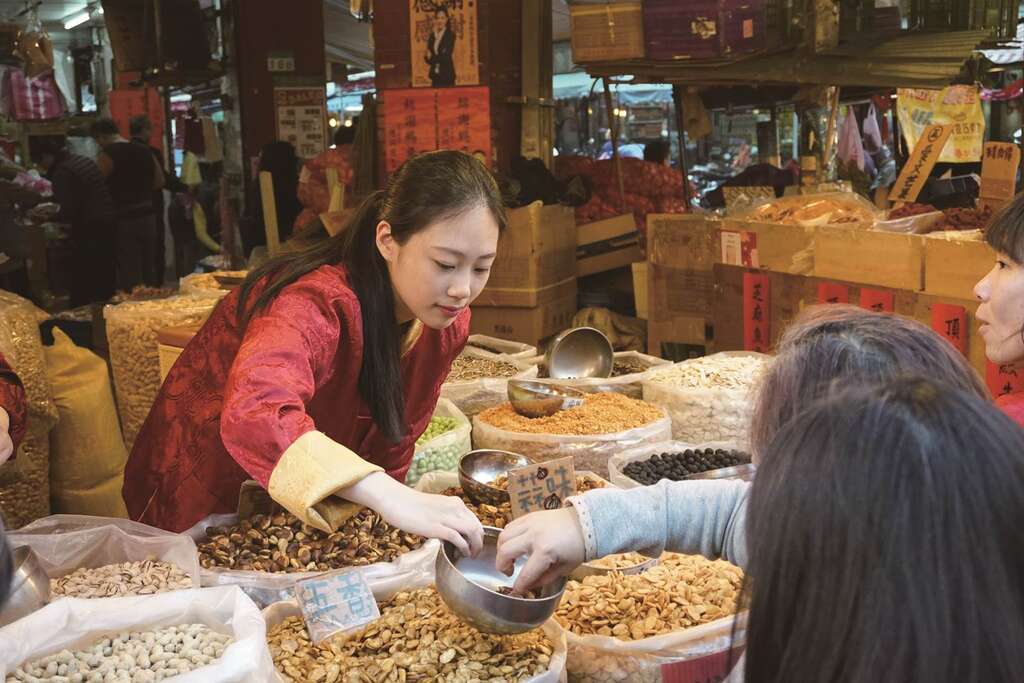
Before the Lunar New Year, those in Taipei usually head to Dihua Street (迪化街) in Dadaocheng to shop at the "Taipei Lunar New Year Festival (台北年貨大街)" and purchase mullet roe along with other festive items. Even foreign tourists, upon visiting Dihua Street, would be easily tempted to try a slice of mullet roe, often offered at shops as a free sample. This is one of the most delicious traditional island delicacies on Taiwanese dining tables.
Hot Pot: Family Reunion
While western societies gather around long tables for significant feasts, typical Taiwanese tables are round, with the center hosting the most important dish of the evening. On Lunar New Year's Eve, this position is often occupied by a hot pot. The roundness formed by the broth in the pot, the table, and the family seated around together indicates a happy family reunion.
Hot pots can take various forms — pre-cooked or with raw ingredients prepared for guests to cook themselves. Due to the festive occasion, ingredients must be abundant, ensuring excess to avoid any semblance of disrespect, and again, to conform with the idea of "surplus."
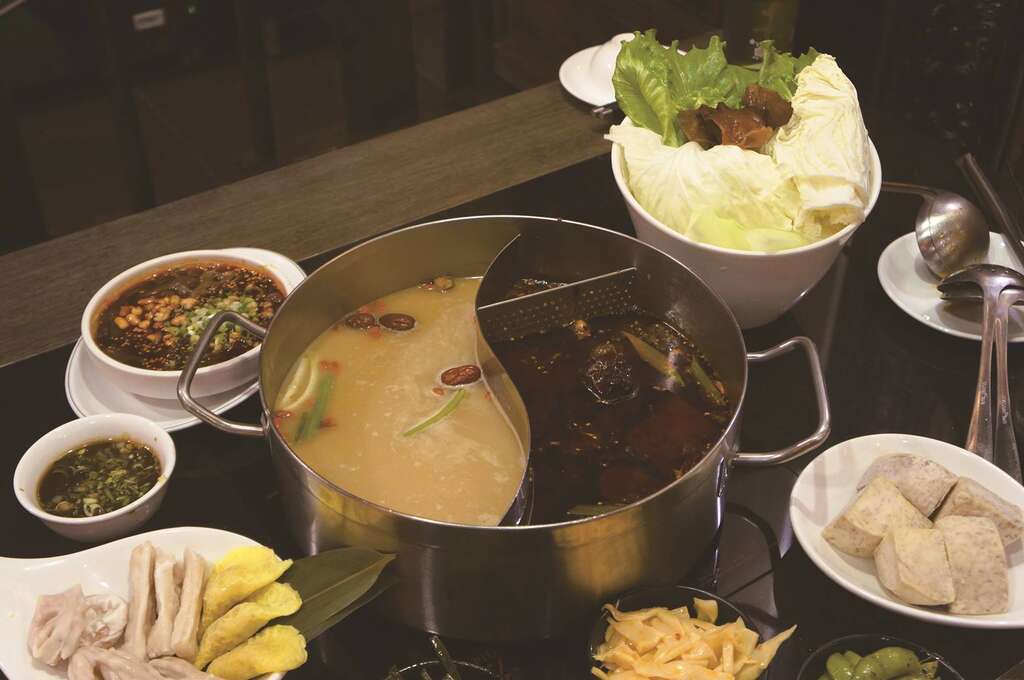 ▲Hot pots can take various forms. Spicy hot pot is especially popular among younger generations. (Photo・April Chen)
▲Hot pots can take various forms. Spicy hot pot is especially popular among younger generations. (Photo・April Chen)
Spicy hot pot, a favorite among the younger generation, sees Ding Wang Spicy Hot Pot (鼎旺麻辣鍋) packed with customers as the winter chills set in and Lunar New Year approaching. Large numbers of people often queue to take away the broth and pair it with meat and vegetables purchased from the market. Egg dumplings from Mr. Chang Hot Pot Food Shop (南門魚丸店) at Nanmen Market (南門市場) are highly sought-after hot pot ingredients. Its popularity leads to long queues and the use of a number-ticket waiting system before the Lunar New Year.
The essence of the Lunar New Year lies in reunion, and the bountiful New Year's dishes call back family members who have been adventuring outside. On Lunar New Year's Eve, family members enjoy delicious food and stay up late chatting, symbolizing welcoming the new year with a fresh start and hope for a prosperous future.
Lunar New Year's Eve Taiwanese Style: A Table of Lucky Dishes
Author Yi Tseng
Photographer Golden Formosa, Know-Sticky Oil Rice, Iris Huang, Stanley Wang, April Chen, Kerstin Hsu, Michael Kuo, Crystal, Department of Information and Tourism, Taipei City Government
 ▲On Lunar New Year's Eve, the whole family gathers together to have a reunion dinner, often with a hot pot sitting in the center of a round table. (Photo・Golden Formosa)
▲On Lunar New Year's Eve, the whole family gathers together to have a reunion dinner, often with a hot pot sitting in the center of a round table. (Photo・Golden Formosa)The essence of Taiwanese cuisine lies in its cross-regional and diverse influences. Early migrations of Min and Yue people, cultural impacts from the Japanese era during the first half of the 20th century, and the arrival of millions of refugees after the Chinese Civil War have all contributed to a rich tapestry.
Despite their diverse cultural backgrounds and languages, these disparate communities share the use of the traditional Chinese lunar calendar. As a result, on the night of Lunar New Year's Eve, everyone returns home to prepare a sumptuous feast, following traditional customs of lucky homonyms, such as having fish for "surplus every year (年年有餘)," sycee-shaped dumplings for "welcoming wealth and treasures (招財進寶)", rice cakes for "rising fortunes year by year (年年高升)," and sitting around the hot pot to form the "roundness" symbol for "family reunion (團圓)."
The varied preparations of these common ingredients showcase the cultural context of each family. Let's unveil the secrets of a Taiwanese Lunar New Year's Eve dinner, often considered the most important meal of the year.
Fish Dishes: Surplus Every Year
Taiwanese people express their humble hopes for the new year with the wish for "harvest with surplus." As the Chinese pronunciation of fish sounds like surplus (餘), fish dishes symbolizing good luck are indispensable. Moreover, for the New Year's Eve dinner, fish dishes should not be completely consumed, to practice the true meaning of "surplus."
Rong Rong Yuan (榮榮園) is highly recommended by food critics and Bib Gourmand. Its horsehead tilefish with stuffed tofu (馬頭魚燒豆腐) captures the rich flavors of Jiangsu and Zhejiang cuisine. For a more affordable option, deep-fried carp simmered with scallions (蔥㸆鯽魚) at the long-established Yi-Chang Yufang (億長御坊) is both slightly sweet and sour, appealing to adults and children alike.
 ▲▼Fish dishes symbolizing "harvest with surplus" are indispensable. Modern families may opt for sashimi for a contrast of flavors. (Above・Michael Kuo;Below・Stanley Wang)
▲▼Fish dishes symbolizing "harvest with surplus" are indispensable. Modern families may opt for sashimi for a contrast of flavors. (Above・Michael Kuo;Below・Stanley Wang)
For those seeking a taste of high-end fish dishes, the steamed grouper or marble goby at well-regarded Shin Tung Nan Seafood (新東南海鮮餐廳) enjoys a stellar reputation. Young families with an open-minded approach to tradition may opt for fresh sashimi from the Addiction Aquatic Development (上引水產), adding a refreshing and stylish touch to the dining table.
Dumplings: Welcoming Wealth and Treasures
The shape of dumplings resembles ancient Chinese currency known as "yuanbao (元寶)," i.e., sycee, a fairly popular symbol of prosperity during the Lunar New Year. The tradition of eating dumplings on New Year's Eve signifies ushering in wealth and becoming rich in the coming year. Hence, famous dumpling shops in Taiwan often see long lines in the days leading up to the Lunar New Year.
 ▲Eating dumplings on Lunar New Year's Eve means ushering in wealth and becoming rich in the coming year, as the shape of dumplings is similar to that of ancient Chinese currency, "yuanbao." (Photo・Crystal)
▲Eating dumplings on Lunar New Year's Eve means ushering in wealth and becoming rich in the coming year, as the shape of dumplings is similar to that of ancient Chinese currency, "yuanbao." (Photo・Crystal)Notable examples include scallop dumplings from Takumi Dumplings (巧之味), said to be President Tsai Ing-wen's favorite, or the frozen dumplings of myriad fillings and seasonings in each Taipei resident's freezer, such as those from A-Yu Dumplings (阿玉水餃). If you can't reunite with family for the Lunar New Year, these easy-to-cook yet delicious dumplings can surely provide a welcome sense of ritual.
Buddha Jumps Over the Wall: Happiness, Longevity and Well-being
The top dish of Taiwanese pot cuisine, Buddha Jumps Over the Wall (佛跳牆), uses a variety of delicacies including premium squid, scallops, winter bamboo shoots, chicken, and ham. It is so fragrant that it's said the vegetarian Buddha would climb over the wall for it after catching its irresistible aroma. Therefore, this dish is also known as Buddha's delicacy.
 ▲The name of "Buddha Jumps Over the Wall" comes from the notion that even the vegetarian Buddha would climb over the wall to enjoy this dish, so irresistible is the alluring aroma. (Photo・Golden Formosa)
▲The name of "Buddha Jumps Over the Wall" comes from the notion that even the vegetarian Buddha would climb over the wall to enjoy this dish, so irresistible is the alluring aroma. (Photo・Golden Formosa)Each ingredient needs to be processed separately and then cooked together. Due to the complicated process, modern families usually choose to order it from restaurants like Golden Formosa (金蓬萊遵古台菜). Their MICHELIN star shines so bright that reservations must be made at least two weeks in advance.
Rice Cakes: Rising Fortunes Year By Year
Every traditional market boasts several stalls selling rice cakes (年糕), turnip cakes (蘿蔔糕), and other traditional pastries that end with the sound "gao," which is a homophone for "rising." Each kitchen manager responsible for sourcing food has their preferred rice cakes vendor, and compromise is out of the question.
 ▲▼People prepare traditional pastries that end with the sound "gao" to hope for rising fortunes. (Photo・Know-Sticky Oil Rice)
▲▼People prepare traditional pastries that end with the sound "gao" to hope for rising fortunes. (Photo・Know-Sticky Oil Rice)
Turnip cakes from Xing Ji Food (興記) at Dongmen Market (東門市場), the various rice cakes from Red Turtle Uncle (紅龜伯) on Sanshui Street (三水街) in Wanhua (萬華) — each has its own loyal supporters. Of course, if there's a family member skilled in making traditional pastries, a homemade rice cake featured in your New Year's Eve table photo will undoubtedly win the most likes on social media, as rice cakes' auspicious meaning reflects Taiwanese people's strong desire for good things to happen in the new year.
Mullet Roe: Prospering Family with Many Offspring
During winter, mullet migrate to southern Taiwan to spawn. Their rich, roe-filled sacs are harvested, then dried in the sun for several weeks, turned regularly until fully dried. Thus, the mullet roe is rich in flavor and full of texture!
While farmed mullet roe is available in the market, the highest quality is still the wild-caught variety, as it's considered a rare and luxurious treat. It's not something that people get to eat every day. When celebrating the Lunar New Year, a platter of mullet roe is a must-have to make the occasion grand, and the abundant eggs are taken as a good omen of many offspring and a prosperous family.
 ▲A platter of mullet roe expresses the meaning of a prospering family with many offspring. (Photo・Kerstin Hsu)
▲A platter of mullet roe expresses the meaning of a prospering family with many offspring. (Photo・Kerstin Hsu)The preparation is straightforward: slice the mullet roe and lightly grill it in an iron pan, or over an open fire. Remember to be careful to maintain its moist texture in the center. Serve with sliced daikon radish, garlic, or even apple for those who fancy a touch of sweetness. It creates a flavorful and sumptuous taste in the mouth.
 ▲▼Dihua Street in Dadaocheng hosts one of the most famous events in Taipei ― Taipei Lunar New Year Festival. Free samples are offered by stalls along the street, tempting visitors to give it a try. (Above・Iris Huang;Below・Department of Information and Tourism, Taipei City Government)
▲▼Dihua Street in Dadaocheng hosts one of the most famous events in Taipei ― Taipei Lunar New Year Festival. Free samples are offered by stalls along the street, tempting visitors to give it a try. (Above・Iris Huang;Below・Department of Information and Tourism, Taipei City Government)
Before the Lunar New Year, those in Taipei usually head to Dihua Street (迪化街) in Dadaocheng to shop at the "Taipei Lunar New Year Festival (台北年貨大街)" and purchase mullet roe along with other festive items. Even foreign tourists, upon visiting Dihua Street, would be easily tempted to try a slice of mullet roe, often offered at shops as a free sample. This is one of the most delicious traditional island delicacies on Taiwanese dining tables.
Hot Pot: Family Reunion
While western societies gather around long tables for significant feasts, typical Taiwanese tables are round, with the center hosting the most important dish of the evening. On Lunar New Year's Eve, this position is often occupied by a hot pot. The roundness formed by the broth in the pot, the table, and the family seated around together indicates a happy family reunion.
Hot pots can take various forms — pre-cooked or with raw ingredients prepared for guests to cook themselves. Due to the festive occasion, ingredients must be abundant, ensuring excess to avoid any semblance of disrespect, and again, to conform with the idea of "surplus."
 ▲Hot pots can take various forms. Spicy hot pot is especially popular among younger generations. (Photo・April Chen)
▲Hot pots can take various forms. Spicy hot pot is especially popular among younger generations. (Photo・April Chen)Spicy hot pot, a favorite among the younger generation, sees Ding Wang Spicy Hot Pot (鼎旺麻辣鍋) packed with customers as the winter chills set in and Lunar New Year approaching. Large numbers of people often queue to take away the broth and pair it with meat and vegetables purchased from the market. Egg dumplings from Mr. Chang Hot Pot Food Shop (南門魚丸店) at Nanmen Market (南門市場) are highly sought-after hot pot ingredients. Its popularity leads to long queues and the use of a number-ticket waiting system before the Lunar New Year.
The essence of the Lunar New Year lies in reunion, and the bountiful New Year's dishes call back family members who have been adventuring outside. On Lunar New Year's Eve, family members enjoy delicious food and stay up late chatting, symbolizing welcoming the new year with a fresh start and hope for a prosperous future.
Gallery
:::
Popular articles
 TAIPEI Quarterly 2023 Winter Vol.34
TAIPEI Quarterly 2023 Winter Vol.34 Ximending: A Shopper's Heaven with a Dash of Tradition and Trendiness (TAIPEI Quarterly 2023 Winter Vol.34)
Ximending: A Shopper's Heaven with a Dash of Tradition and Trendiness (TAIPEI Quarterly 2023 Winter Vol.34) Exploring Taipei's Vibrant Indoor Markets: A Flavorful Journey through History and Culture (TAIPEI Quarterly 2023 Winter Vol.34)
Exploring Taipei's Vibrant Indoor Markets: A Flavorful Journey through History and Culture (TAIPEI Quarterly 2023 Winter Vol.34) Soak in History: A Winter Journey to Taiwan's Timeless Hot Springs (TAIPEI Quarterly 2023 Winter Vol.34)
Soak in History: A Winter Journey to Taiwan's Timeless Hot Springs (TAIPEI Quarterly 2023 Winter Vol.34) The Art of Wealth Seeking: Temples and Culture in Taipei (TAIPEI Quarterly 2023 Winter Vol.34)
The Art of Wealth Seeking: Temples and Culture in Taipei (TAIPEI Quarterly 2023 Winter Vol.34) Bookstores Redefined: Embracing Global Connections and Creativity (TAIPEI Quarterly 2023 Winter Vol.34)
Bookstores Redefined: Embracing Global Connections and Creativity (TAIPEI Quarterly 2023 Winter Vol.34)
 Lunar New Year's Eve Taiwanese Style: A Table of Lucky Dishes (TAIPEI Quarterly 2023 Winter Vol.34)
Lunar New Year's Eve Taiwanese Style: A Table of Lucky Dishes (TAIPEI Quarterly 2023 Winter Vol.34)